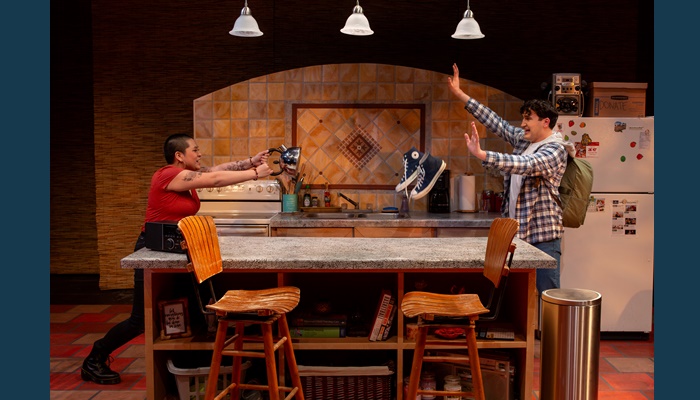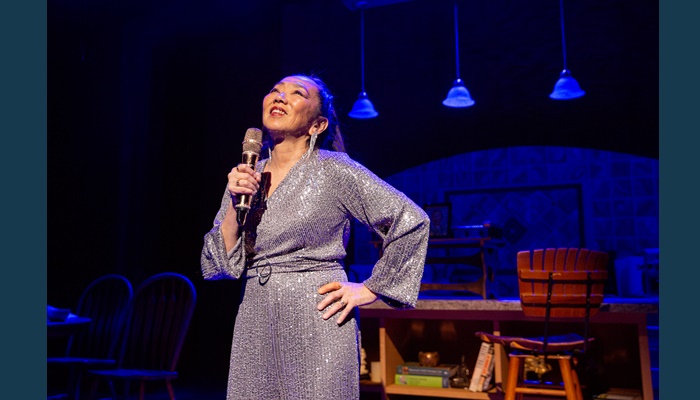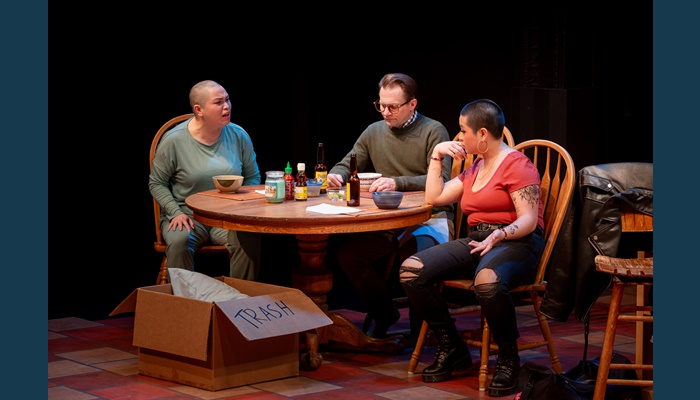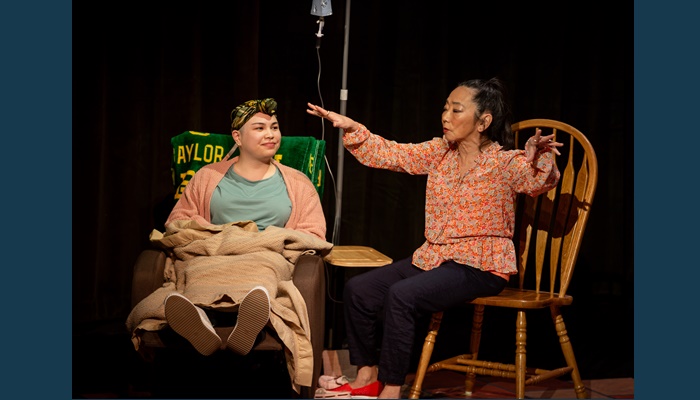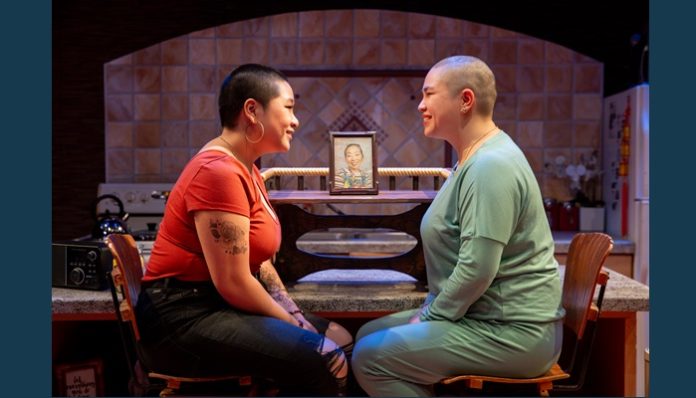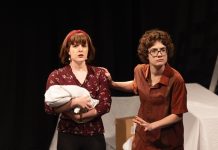SALT LAKE CITY, Utah, April 24, 2024 (Gephardt Daily) — There was a moment at the end of the play “Bald Sisters” at Salt Lake Acting Company that I believe was the most profound I’ve experienced at a theater this year.
Sophea (the younger of the title’s bald sisters, played by Audrey Pan in this production) has been attempting to meditate sporadically throughout the show and finding it challenging. There’s a very simple moment that closes the play, where the sisters meditate successfully together, forehead to forehead. One opens her eyes and looks at the other, then closes her eyes again. Then the other sister does the same thing, and finally, they open their eyes in sync.
A recent study published in the journal “Scientific Reports” finds that physical responses — including heart rate, breathing and the electrical conductivity of skin — synchronize between audience members at classical concerts. People who listen to music together often report feeling a powerful connection to each other as a result of their collective experience. And in that moment at the end of “Bald Sisters,” you could feel the whole audience breathing as one with the siblings.
But let’s rewind a little. This gem of a play by Vichet Chum was developed by, and had its world premiere at, Steppenwolf Theatre Company, opening at the end of 2022. It first appeared on the radar of SLAC’s executive artistic director Cynthia Fleming because she received “a series of excited emails about a play extending from Steppenwolf Theatre Company,” as she describes in the program. This piqued her interest because the U.S. was still in the throes of a pandemic and plays were generally not extending. And as it turned out, the playwright, Chum, also has a direct connection to SLAC; he appeared as an actor in the company’s Playwrights’ Lab.
Set in Carrollton, Texas in 2017, the play follows two sisters — at odds since birth — as they settle the affairs of their strong-willed, wise-cracking mother, who has just died, while reconciling their family’s Cambodian heritage with its ever-so-complicated American present. Where’s the will? A burial or cremation? And what do they do with Ma’s teeth? “Bald Sisters” is an irreverent, comedic and ultimately poignant examination of the ties that bind multigenerational families of immigrants together: history, spirituality and humor.
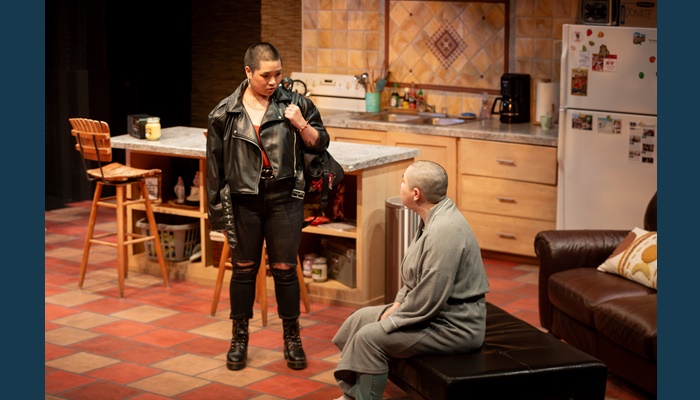
In this regional premiere, “Bald Sisters” plays at SLAC, at 168 W. 500 North, through May 5, with shows from Wednesday to Sunday. For more information and tickets, click here.
This is for sure the strongest show I’ve seen at SLAC in quite a while. It’s a visceral experience, and there is a beautiful synergy among all the components of the play, but somehow, each element is also allowed to shine in its own right. First of all, I loved the script. Chum really dances on the knife edge between joy and pain; the play goes pretty deep, with themes including immigration, assimilation, loss, community, racism, infertility, and infidelity. You’ll feel your heart being ripped out, but then almost immediately put back together again multiple times. It’ll make you laugh and weep in equal parts, and personally, I left the theater feeling oddly cleansed.
Secondly, the direction by Seonjae Kim is sure-handed but simultaneously fluid and subtle. It’s sweeping but also intimate. She takes all the disparate themes and braids them together into a cohesive whole, really rounding out the five characters so we see both their sometimes spiky exteriors and their softer underbellies. There is nothing extraneous in this 90-minute production; the set throughout depicts Him and her husband Nate’s kitchen, but there are moments when furniture represents other things, for example the ottoman in front of the sofa becomes the car that Sophea drives.
The acting, across the board, is exceptional. Both Pan as Sophea and Wendy Dang as Him (rhymes with dream) create complex, achingly human characters, both of whom are dealing with huge, life-changing experiences. Him is undergoing chemotherapy to treat breast cancer, but, as we find out part way through the play, has also experienced excruciating loss in other areas. She’s become a shell of a person, and in a sense, the character of Him represents, in microcosm, the Cambodian genocide itself. The Khmer Rouge regime eradicated virtually all of the country’s social and cultural roots, ruling in a totalitarian state in which citizens had essentially no rights — they abolished civil and political rights, private property, money, religious practices, minority languages, and foreign clothing. In this case, the character of Him is also being stripped of the things that make her an individual, including her hair. Him is slowly withering, surrounded by death, whereas Sophea is blossoming. Pan and Dang have a lovely chemistry and we completely buy that the two are siblings; anyone who has sisters will appreciate that complicated dynamic that is unlike any other relationship in the world.
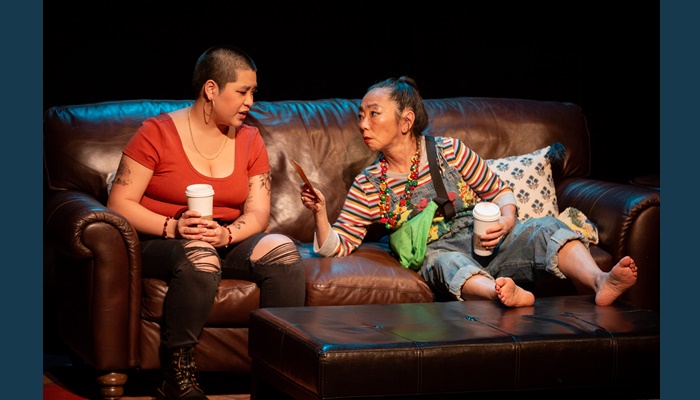
As Ma, Keiko Shimosato Carreiro sparkles like a disco ball in every scene she is in. Carreiro also played the role of Ma in San Jose Stage’s production of “Bald Sisters,” and it’s obvious she knows the role inside out. Carreiro perfectly balances the humor and verve of Ma with the darker shadows that lurk just beneath her surface, after witnessing firsthand the actions of Pol Pot’s Khmer Rouge regime.
In supporting roles, David Knoell and Alec Kalled are outstanding. Both are extremely inventive actors who always make interesting, bold choices onstage. Knoell plays Him’s husband Nate, who is a pastor. Kalled plays Seth, whose family fled Syria because of the civil war. He’s a college student that cuts Him and Nate’s grass and also drives Him to her treatments. Interestingly, I thought I could guess from the first scenes Nate and Seth appear in what they would represent in the play; but both turn out to be much more complex than one assumes at the outset.
The production values are lovely but at no point upstage the excellent work going on onstage. The scenic design by Gage Williams is the crowning glory, depicting a fully functioning kitchen with a well-stocked fridge, oven, sink and central island. As I mentioned before, the set manages to be hyper-realistic but also abstract as furniture becomes other things. In a nice touch, there are also elements of the set that contain echoes of Cambodia, including a wall of bamboo blinds that hang behind the kitchen. The lighting design by Jesse Portillo, sound design by Jennifer Jackson, and costumes by Alicia Kondrick are all straightforward but with touches of flair, as you will discover when you see the show. A nice touch by Jackson, for example, is a static radio sound between some scenes, as Ma recounts at one point that Him liked to listen to that sound rather than the actual radio.
In the program, Chum implores the audience to think about the play as not “just a Cambodian story (though it very much is!) but a story about you. The ways you fight to be witnessed. The ways you are being called to witness each other.” And maybe breathing in sync with your fellow audience members is a great way to take the first step toward that.
